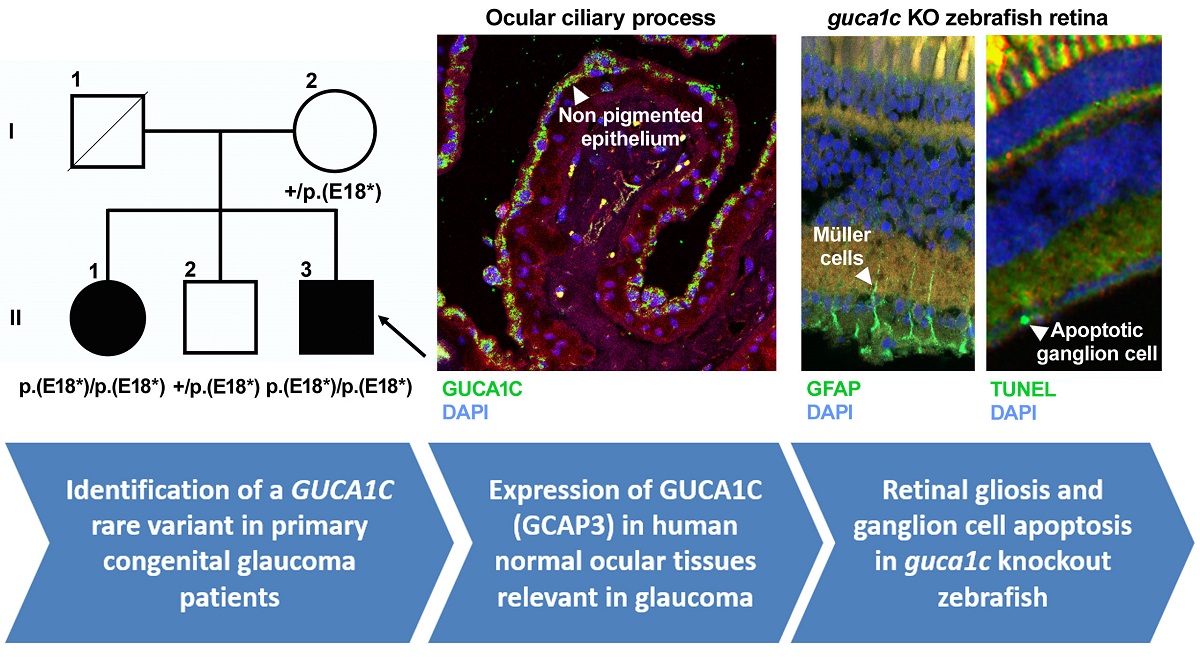Primary congenital glaucoma (PCG) is a heterogeneous, inherited, and severe optical neuropathy caused by apoptotic degeneration of the retinal ganglion cell layer. Whole-exome sequencing analysis of one PCG family identified two affected siblings who carried a low-frequency homozygous nonsense GUCA1C variant (c.52G>T/p.Glu18Ter/rs143174402). This gene encodes GCAP3, a member of the guanylate cyclase activating protein family, involved in phototransduction and with a potential role in intraocular pressure regulation. Segregation analysis supported the notion that the variant was coinherited with the disease in an autosomal recessive fashion. GCAP3 was detected immunohistochemically in the adult human ocular ciliary epithelium and retina. To evaluate the ocular effect of GUCA1C loss-of-function, a guca1c knockout zebrafish line was generated by CRISPR/Cas9 genome editing. Immunohistochemistry demonstrated the presence of GCAP3 in the non-pigmented ciliary epithelium and retina of adult wild-type fishes. Knockout animals presented up-regulation of the glial fibrillary acidic protein in Müller cells and evidence of retinal ganglion cell apoptosis, indicating the existence of gliosis and glaucoma-like retinal damage. In summary, our data provide evidence for the role of GUCA1C as a candidate gene in PCG and offer new insights into the function of this gene in the ocular anterior segment and the retina.

